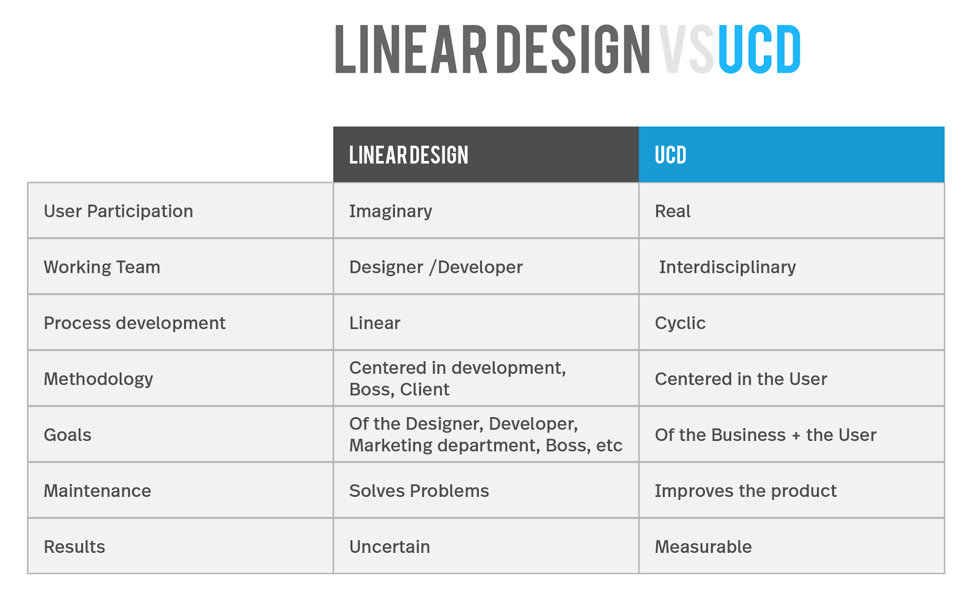 The first time someone comes across the term “User Centric Design” there might be confusion because isn’t all design user centric??? Arguably yes, but…
The first time someone comes across the term “User Centric Design” there might be confusion because isn’t all design user centric??? Arguably yes, but…
User centric design is a fairly new design concept which involves real users throughout the design process. User centric design also known as (USD)is an interface design methodology that is based on the research and the participation of the final users of the interface.
Before we dive into the advantages of user centric design lets look at the design concept that was used prior to UCD, linear design. Prior to UX and UI becoming a household concept, design projects were normally in “linear design” which meant the center of the design thought process was based on the client or stakeholder. Typically, during the design phase there are multiple teams involved which could include the client, the designer, the developer and the project manager. The only issue was each person involved had different opinions on how the design should and maybe should not look. As you can imagine not all opinions align which creates conflict between all teams. Aside from the difference of opinions, each member involved was missing what was most important- the end user!
End users are so important because that’s the whole point of creating the design to being with, right? You want to make sure that the end user’s “needs” so to speak are addressed in the design process so that the end user has the best experience possible. The problem with the linear approach is that it tends to produce products that are out of touch with the end user. Thankfully, user centric design made its debut in the design process.
User centered design (UCD) establishes a unified program of needs and goals based off of research (and not vague ideas from the team involved). The client’s business and user goals are still very important in the design process however they are addressed in the strategy phase so that designers, developers and project managers know how to best guide the project based off of the goals of the client. The purpose of this approach is to create products that are based on real needs and expectations of the end user.
To outline things further, we have created a chart (below) which gives you a better understanding.
 It’s always good to have a pulse check on your design to make sure its still meeting the needs of your target audience. If you are questioning the effectiveness of your design, get in touch, we are happy to chat! In the mean time, be sure to check out our UCD design process.
It’s always good to have a pulse check on your design to make sure its still meeting the needs of your target audience. If you are questioning the effectiveness of your design, get in touch, we are happy to chat! In the mean time, be sure to check out our UCD design process.

